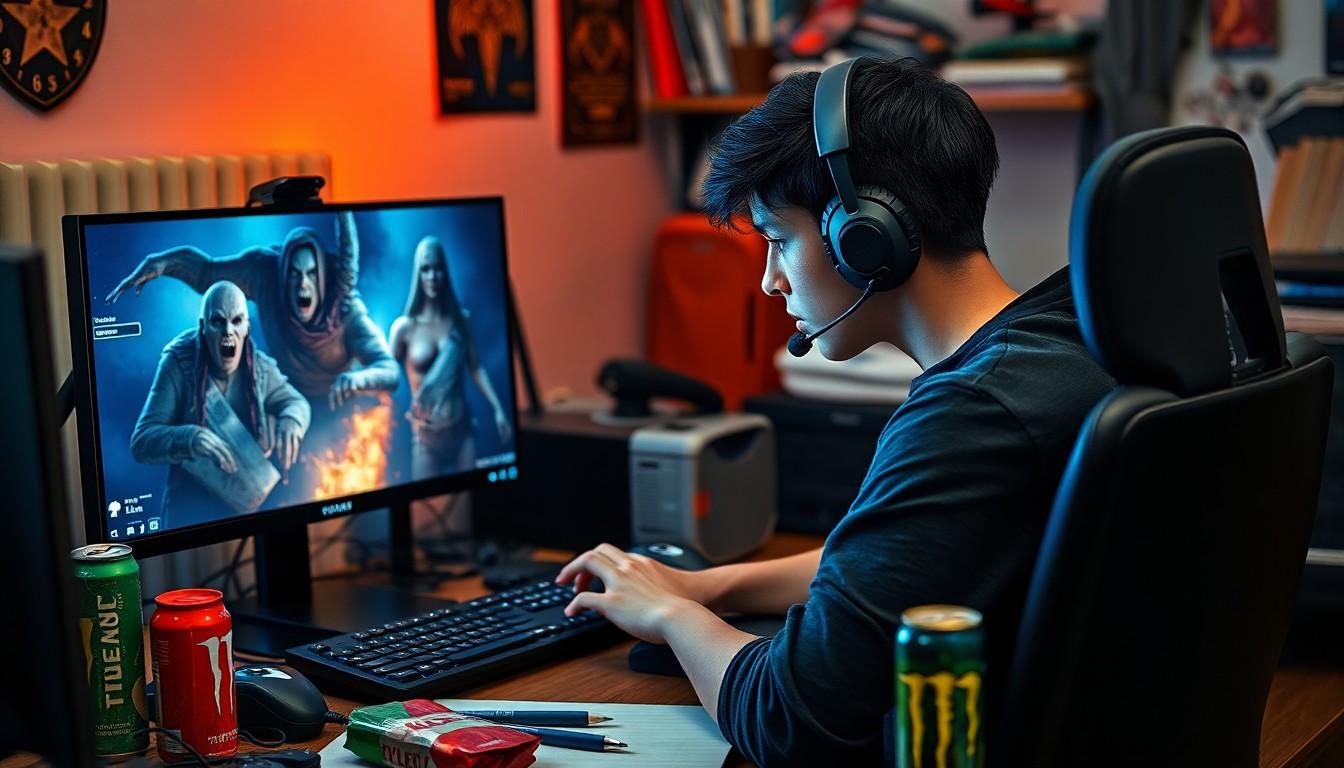Phone:
(701)814-6992
Physical address:
6296 Donnelly Plaza
Ratkeville, Bahamas.

Dying Evil TD7 is a thrilling experience that promises heart-pounding action and gripping gameplay. But what happens when the excitement gets interrupted by choppy performance on PC? It’s like trying to watch a horror movie with the power flickering on and off—hardly the adrenaline rush players crave.
Dying Evil TD7 offers players an intense gaming experience filled with action and suspense. Gameplay involves strategic tower defense elements combined with horror themes, drawing players into a gripping storyline. Players face hordes of enemies while employing various strategies to survive, which adds depth to the gameplay.
Graphics play a crucial role in immersing players in the chilling atmosphere. They expect high-quality visuals that heighten the tension and excitement. However, some players report performance issues on PC, which leads to a disjointed gaming experience. Reduced frame rates and lag disrupt the flow of the game, significantly affecting enjoyment.
Audio also enhances the overall experience. Sounds of unsettling environments and thrilling music contribute to building suspense. Despite these strengths, technical problems dilute the impact of audio and visual elements.
System requirements may contribute to choppy performance. Players running the game on lower-end hardware may experience difficulty maintaining smooth gameplay. Adjusting settings can provide some relief, yet many players find that minimum requirements don’t always guarantee an optimal experience.
Community discussions often revolve around performance optimization. Players share solutions, from adjusting graphical settings to updating drivers, aiming to resolve hiccups during gameplay. If these solutions fail, they express frustration, seeking additional guidance on improving performance without sacrificing quality.
Overall, Dying Evil TD7 captivates players with its thrilling premise, but performance issues hinder the enjoyment of this horror tower defense game. Achieving a seamless and immersive experience remains a priority for many players.

Dying Evil TD7 often presents several performance challenges on PC. Key issues like low frame rates and stuttering gameplay play major roles in the gameplay experience.
Low frame rates disrupt the fluidity of Dying Evil TD7. Players frequently report significant drops, especially during intense battle sequences. Hardware limitations often cause these frame rate issues. High graphical settings may exacerbate low frame rates on older systems. Reducing settings like texture quality or shadow effects can help improve visual performance. Players should regularly check system compatibility against the game’s specified requirements to ensure optimal performance.
Stuttering gameplay can detract from the immersive experience of Dying Evil TD7. Players encounter this issue when the game fails to maintain a consistent frame rate. Sudden drops in frames can occur due to running background applications or insufficient memory allocation. Closing unnecessary applications may alleviate the stuttering. Additionally, ensuring that graphics drivers are current can resolve compatibility issues that lead to performance hiccups. Regular optimization prevents these disruptions, allowing players to enjoy the game seamlessly.
Understanding the system requirements is crucial for an optimal experience in Dying Evil TD7. Meeting or exceeding these specifications can significantly enhance gameplay and reduce performance issues.
Players should look for at least an Intel Core i3 processor or AMD equivalent for smooth operation. A minimum of 4GB RAM is necessary to run the game, and graphics cards like NVIDIA GeForce GT 730 or AMD Radeon R7 240 are recommended. DirectX 11 support is essential, ensuring compatibility with various systems. Additionally, having 20GB of available storage space is vital for installation. These minimum requirements allow players to engage in gameplay, though they may encounter occasional performance hiccups during intense action.
For an improved gaming experience, it’s advised to have an Intel Core i5 or Ryzen 5 processor. Players should consider upgrading to 8GB of RAM to facilitate smoother multitasking. A dedicated graphics card such as NVIDIA GeForce GTX 1050 or AMD Radeon RX 560 enhances visual performance significantly. DirectX 11 support remains crucial, and allocating 30GB of free storage provides extra room for updates. Following these recommended specifications helps players enjoy enhanced graphics, fluid frame rates, and an immersive experience in Dying Evil TD7.
Performance issues can significantly impact gameplay in Dying Evil TD7. Targeting specific areas can lead to noticeable improvements in the gaming experience.
Adjusting graphics settings is vital for enhancing performance. Lowering texture quality can reduce the strain on older systems. Disabling shadow effects often provides smoother gameplay. Players should experiment with settings to find the right balance between visual quality and performance. Reducing resolution also helps in maintaining a steady frame rate. Using preset options may simplify this process for those unfamiliar with technical adjustments.
Managing background processes is essential for optimal performance. Unwanted applications consume valuable system resources and can lead to stuttering gameplay. Closing programs that aren’t in use frees up memory and processing power. Players can access the task manager to identify and terminate these processes. Periodically checking for automatic updates also helps, as they may trigger resource-heavy activities.
Keeping graphics drivers up to date is crucial for reducing performance issues. Updated drivers often contain optimizations specifically designed for new games, including Dying Evil TD7. Players can visit the manufacturer’s website to download the latest versions of their graphics drivers. It’s also beneficial to check for motherboard updates to ensure compatibility. Regularly updating drivers can significantly enhance the overall gaming experience and minimize graphical glitches.
Performance issues in Dying Evil TD7 can significantly impact the gaming experience. Players encounter frustrating lag and low frame rates, particularly during intense battles. By understanding system requirements and making necessary adjustments, they can enhance gameplay.
Reducing graphics settings and managing background applications are effective strategies to improve performance. Keeping hardware updated and ensuring compatibility with the game’s requirements are essential steps for a smoother experience. With the right optimizations, players can fully immerse themselves in the chilling atmosphere and strategic elements that Dying Evil TD7 has to offer.